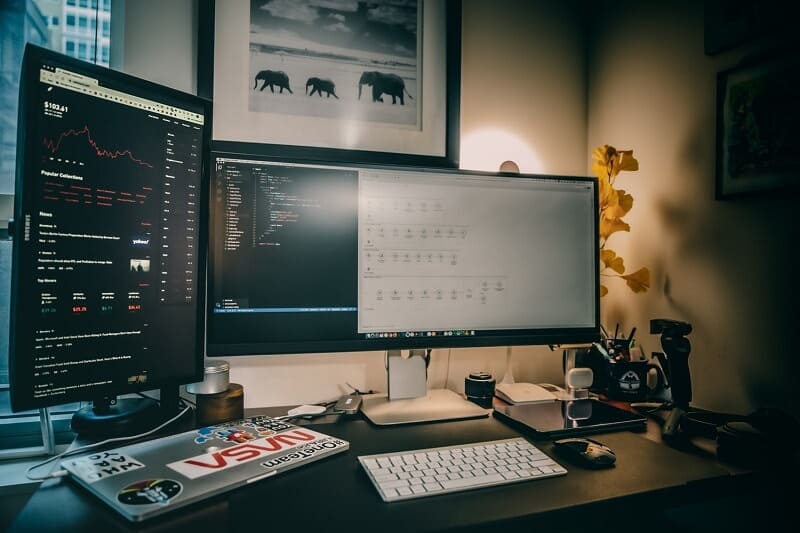
Nobody can with certainty predict a stock market bottom. Still, it’s worth at least thinking about different entry points to let your money work for you.
By Guy Avtalyon
The questions for the past several weeks mainly were all about the stock market bottom. Did the stock market hit the bottom? Will the stock prices stop dropping? Have stocks reached support levels? When will prices stop falling?
Stock traders have so many questions these days and weeks. But do they really know where to look?
Maybe one of the most terrifying jobs related to investing is about the stock market bottom and how to recognize it. The idea to predict when a given stock will hit the bottom is old as much as investing and trading. The point is to recognize the point where the stock will no longer drop. The rule of thumb is: buy low, sell high. The problem arises when we have some unpredictable events in the market such as this one, coronavirus pandemic. That has an influence on the global economy, almost all economic and political events, and decisions. So, with a high level of certainty, we can say finding the stock market bottom can be a discouraging job.
Well, this kind of question traders ask almost every day but are they looking in the right place to find the answer? For example, investors are looking at Dow Jones. Is it the right place? We are afraid that the value of DJIA isn’t able to alarm you when the stock market hits the bottom. Okay, it will tell you but after it happened.
So what to do?
How to recognize the stock market bottom?
If you want to find it, you’ll need some indicators. Indicators can tell you when is the stock market going to hit a bottom but also when it is going to recover. By using indicators you’ll not miss the beginning of the wave. When buying a stock you want to do so at the lowest possible price but you wouldn’t like to hold falling stocks. You would like them to start rising after you bought them, right? That’s why it is so important to recognize the stock market bottom. The point where the stock can find support.
That knowledge can give you huge profits and prevent huge losses. So, how can we know with certainty that a stock has touched a low point? To be honest, no one can do that with 100% certainty and consistency, but traders and investors have some tools, fundamental and technical trends, and indicators. They arise in stocks when they are about to tap the bottom.
The indicators of stock market bottoms
Some indicators can help us determine when the stock market is going to form a bottom. What we really need to have are indicators of the health of a global economy and what the main participants in the market are doing with their money. But keep in mind, there is no such thing as a magic indicator to identify a stock market bottom. We have to look at several indicators to have an idea of the economy’s and stock market’s health.
Second, we have to look at history because it will tell us that the average bear market persists about 17 months. Also, it corrects around 35% from the maximum. But keep in mind that you cannot find the two bear markets alike 100%. All we can do is to suppose that the next will be similar.
Further, we have to understand the valuation. For example, the S&P 500 has a P/E ratio and earnings. The P/E ratio will move up and down depending on the market period. It will be up when we have good earnings growth, all ratios including the P/E ratio will go up. But when the circumstances are changed, with rising pessimism the valuation is likely to go down.
For example, when the S&P Index was above 2.500 the P/E ratio was at 19.
Also, the higher the VIX is, the chances for the stock market to hit the bottom are growing. These first two days in April this year, VIX traded between 54 and 57. If we take a look at historical data we can see that in 2008, the VIX was somewhere between 70 and 95. During the March this year, VIX traded over 75.
Other indicators of the stock market bottom
The stock market fell over 25% in 3 weeks. This is the sharpest drop in history. The biggest decline occurred on March 12th, the biggest since the market crash in 1987. Many investors thought that a stock market hit a bottom.
If you want to recognize when the stock market bottom is, check out your emotions. Did you feel fear at that time? If yes, you were one of the millions with the same emotion. Fear was so obvious in the middle of March. To be honest, almost all were panicked.
But we have to try to be reasonable. Just take a look at the charts and the technical levels for those days. Can you notice the major pivot? Do you notice a bottoming tail and a huge volume?
Okay! A major pivot, bottoming tail, and a huge volume on the same day and combined with a market 3-weeks decline of 25%, are indicators there was some at least short-term bottom.
What to do when the stock market is near the bottom?
The most intelligent investors started to buy those days. Small chunks, nothing big. Smart investors are doing such a thing to accumulate their full positions. The point is to buy 25% or 30% even 50% of the total position. That will keep your potential stress down and provide you an all in all a better average. But remember, don’t buy some small-cap, go for the brands.
Where is the market bottom now?
That is the most frequently asked question since coronavirus appeared.
Market experts like to say that it’s impossible to time the market. Well, it isn’t the truth. If we can see the market tops, why shouldn’t we see the market bottoms? Institutional investors know that. Follow what they are doing. Their actions could be the key bottoming signal. Follow-through has been noticed at almost every stock market bottom. This signal is extremely important because it can provide you profits when the early stages of a new market uptrend is confirmed.
The quest for a stock market bottom
This signal works quite simply. When there is a sustained stock market downturn, the first rising day from the index low is most important. That could be the beginning of a rally attempt. No matter which index you are using S&P 500, Dow Jones or Nasdaq.
According to some experts, the gain expressed in percentages isn’t important at this point. Also, don’t pay attention to the trading volume. What you have to look at is a down session and the moment when the index bounces after a great drop and closes close to session highs. Some experts deem that closing in the top half of the day’s trading range is adequate also.
Further, find a bigger percentage gain in higher volume than the prior session several days in the rally attempt. This time period is making it possible for short covering to resolve and for a rally attempt to gain ground. The rally will be halted in place only if the index reaches a new low.
How will the market react after the pandemic?
It is good if the market supports the new buyings, but if it doesn’t, just be patient. Sometimes, breakouts are visible on the charts after a few weeks. This market crash caused by the coronavirus outbreak has a large supply of stocks making the new base. But a lot of them have yet to bottom.
If an index suffers a decline in higher volume shortly after the follow-through day, the signal will fail in most cases. If close below the low of the follow-through day, it is almost the same. It is more the sign to start selling the stocks you bought recently.
These signals don’t mean you should rashly jump into the market since they tend to fail after indexes have dropped clearly in a short time. That happened with the stock market correction in February. The more suitable is to buy a few stocks, maybe one or two, and test how they will work. If there is a real uptrend your stocks will rise.
Every investor wants to know when trends are going to make a significant change. Will they reach tops or bottoms. The truth is no one knows that for sure. Only the big volume spikes, and staying stick to the chosen sector, will give you some clue if the stock has reached the lowest level from which it will not decline more. We pointed just one of the numerous scenarios. There are many others.



















